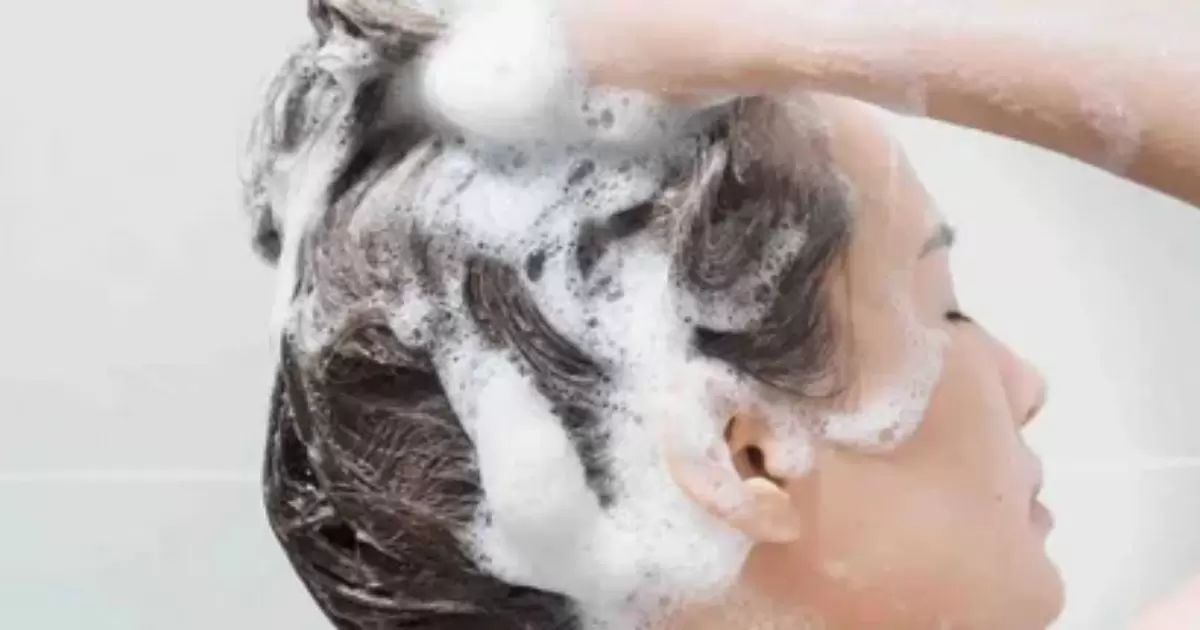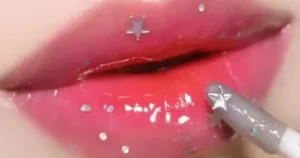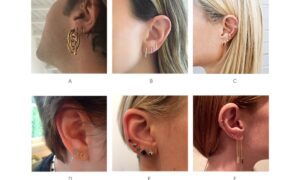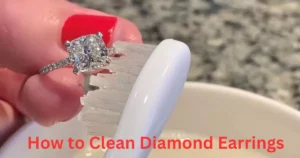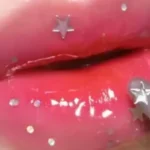How frequently you need to cleanse your hair depends on several factors. There is no single right or wrong answer, as your individual hair type, lifestyle, and preferences will impact your ideal hair washing schedule. In this comprehensive guide, we’ll explore all the variables that determine wash frequency and provide tips for caring for your hair whether you wash daily or stretch it out longer between washes.
What happens if you don’t wash your hair?
If you go too long without cleansing your hair, there can be some negative side effects:
It could slow hair growth
When sebum and dead skin cells are allowed to build up on the scalp for extended periods, it can clog hair follicles and inhibit new hair growth.
Oils and grime can be trapped, creating odor
Not washing regularly will lead to a heavy coating of oils, sweat, and environmental pollutants clinging to the hair and scalp. This trapped grime can manifest as unpleasant odors over time.
Hairs may become ingrown
The buildup that forms when hair isn’t washed can push hairs back down into the follicles, causing ingrown hairs or other irritated bumps and spots.
Itchy scalp
Excess sebum and dead skin left unattended can irritate and inflame the scalp, leading to itchiness, flaking, or even infections in severe cases.
How many times a week should you wash your hair
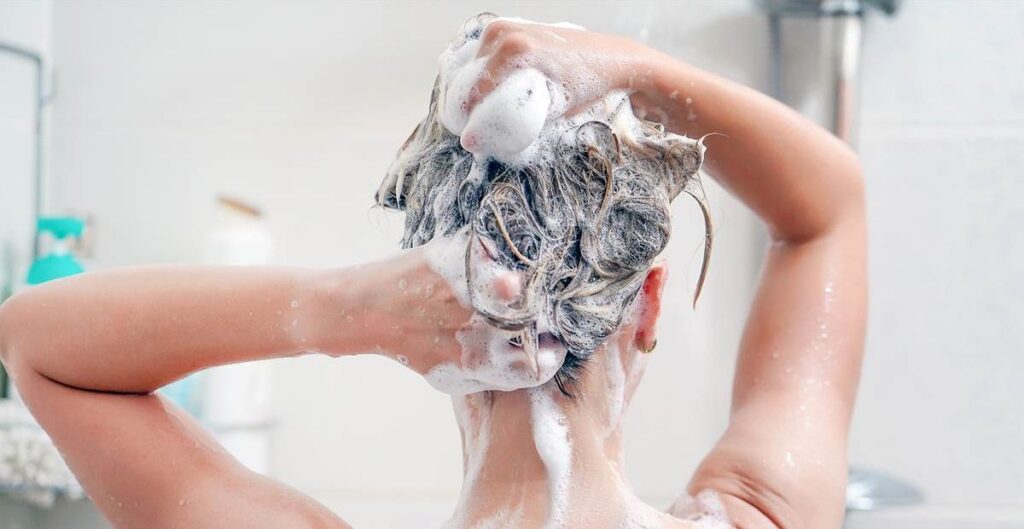
There is no universal rule, as many variables influence optimal hair washing frequency. Most individuals will find success washing their hair 2-3 times per week. Here are some guidelines based on different hair traits and lifestyles:
Sweaty workout
If you exercise vigorously on a daily basis and work up a heavy sweat each time, you’ll want to shampoo nightly to prevent buildup and odor from sweat residue.
Oily or straight hair
Those with oilier scalps or straight, fine hair textures may find washing every other day or 2-3 times weekly keeps things fresh and hair looking its best.
Natural hair
Curlier, kinkier, or coily natural hair textures often do best with less-frequent washing to retain needed moisture – aim for once a week or every 10 days.
Age
As we age, our sebaceous glands tend to produce less oil. Older individuals may only need to wash hair once a week or every 10-14 days.
Ethnic background
Those with looser curls, waves, or thicker, more coarse hair textures like some African or Afro-Caribbean hair may benefit from washes even less than weekly – as infrequently as every 2-4 weeks.
Hair length
Short hair generally shows signs of needing washing sooner than longer styles since excess oil is less diluted along shorter strands.
Activity level
More active lifestyles with daily sweating may warrant washing hair more frequently, while less physically demanding routines allow stretching it out an extra day.
So in summary, most people will find optimal results cleansing their hair 2-3 times per week, though this may vary from daily to weekly or longer depending on individual traits. Listen to your hair and scalp’s needs to tailor the appropriate frequency for you.
How often should you condition your hair
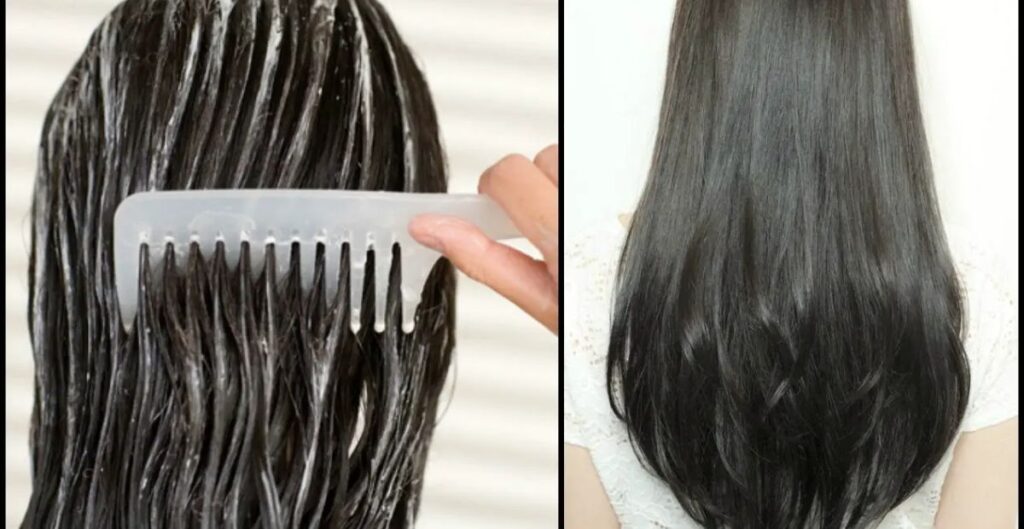
As a general rule, you’ll want to condition each time you shampoo to help replenish moisture stripped away during cleansing. But the exact conditioning frequency depends on your hair:
- Oily or straight hair may only require conditioning 2-3 times weekly along with shampooing
- Dry, damaged, or color-treated hair will benefit from conditioning both when shampooing and on non-wash days as well
- Thicker, coarser, or heavily textured hair often only needs conditioning 1-2 times per week along with shampooing due to its natural ability to retain hydration
- Curlier, kinkier, or coily hair textures almost always need conditioning with every wash and potentially additional moisturizing treatments between washes due to their higher porosity
So in summary, condition as often as you shampoo or whenever hair seems to need a moisture boost, adjusting frequency based on your specific hair type and condition. Don’t be afraid to condition without shampooing too for added nourishment.
How to wash hair properly
Following some simple hair washing techniques will help you cleanse effectively without damaging strands:
Wet hair thoroughly
Start by wetting all of your hair and scalp with lukewarm water to prepare them for shampoo application.
Apply shampoo
Massage a small amount of shampoo into your scalp using fingertips in circular motions to break up oils and sweat. Focus shampoo here and avoid excess buildup by gently working it through ends.
Go easy on your scalp
Be careful not to over-scrub or over-lather the roots, which can cause inflammation and irritation. Gentle cleaning prevents irritation and scalp issues.
Rinse thoroughly twice
Rinse all suds from hair and scalp not once but twice to fully remove any residual shampoo, which can potentially weigh hair down if leftover.
Condition from mid-lengths to ends only
Work your conditioner through from ears down, avoiding roots, for best results tailoring hydration where it’s needed without heaviness.
Rinse conditioner fully
Rinse all conditioner from hair to prevent residue buildup that can dull color or texture over time. Finish with an apple cider vinegar rinse for extra softness and shine if desired.
Proper technique will leave hair feeling fresh and manageable while protecting its health for future washes. Adjust technique based on hair characteristics as needed.
Factors that impact your wash schedule
Several variables influence ideal cleansing frequency beyond basic traits. Consider these additional criteria when customizing your routine:
bHow long is too long?
Most experts agree that going longer than 7-10 days without shampooing risks scalp issues like odor, flakes, and hair damage from excessive buildup for many. However, some curlier or thicker hair can stretch it a bit longer.
Signs you’re washing too often
Hair that feels dry, brittle, or looks dull likely needs a break from daily shampooing. Extra scalp flaking or itchiness could also mean your hair needs more non-washing recovery time between washes.
Home remedies
For extra sweaty days between planned washes, try a rinse with diluted apple cider vinegar or a saltwater solution to refresh without stripping hair of natural oils.
Considerations for dyed hair
Color-treated hair is more porous and prone to fading, so those with dye may need to cleanse slightly more frequently, perhaps 2-3 times weekly, to slow loss of vibrancy.
What type of water to use
Hard water with high mineral content requires more moisturizing product use to balance its leaching effects compared to soft water. Adjust your routine accordingly.
Best water temperature
Lukewarm is best, as hot water can open cuticle scales for damage while cold shocks the hair. Tepid is a happy hydrating medium.
What not to do
Avoid excessively scrubbing roots, toweling hair dry, over-brushing wet strands, and relying on super hot dryers and tools which can all increase breakage and damage over time.
Consider your styling habits
Daily use of more conditioning leave-ins or creams between washes allows stretching washing frequency. But heavier products and frequent hot tool use means hair needs cleansing more regularly.
So in summary, tailor your washing routine based on how hair looks and feels as well as factors like product usage, water quality, dye status, tools, and activity level. Be conscious of signs of over or under-washing too.
Tips to shampoo less
If you want to stretch out the days between hair washing, try these strategies to freshen hair without stripping moisture:
Deep conditioner
On non-wash days, apply a deep conditioner masque liberally from roots to ends and let it soak in overnight under a plastic cap for super soft effects.
Cleansing conditioner
Look for sulfate-free formulas designed to both cleanse and condition in one step for arefresh without stripping natural oils.
Dry shampoo
Sprinkle a texturizing dry shampoo at the roots to erase oiliness and add volume between planned shampoo days. Opt for formulas with no visible residue.
Homemade dry shampoo
DIY dry shampoo out of 1 part cornstarch and 1 part cocoa powder for a more affordable body-boosting option between washes.
Strategically using these techniques 1-3 times between regular cleanses helps hair stay fresh for longer without over-washing damage. Your scalp may thank you too!
How to apply conditioner
For soft, healthy hair it’s important to condition correctly:
- After shampooing, splash some warm water on hair if needed to reopen cuticle scales for optimal product absorption.
- Scoop out a quarter-sized dollop of conditioner and warm it between your fingers before applying from mid-lengths to ends.
- Work it through strands section by section without excess buildup at the roots to prevent limpness.
- Let conditioner soak in for 1-5 minutes before rinsing fully with cool water to seal the cuticle and lock in hydration.
- For extra moisture on dry or damaged hair, do a second application and leave in for longer or as a leave-in treatment on ends post-shower.
Making sure to rigorously condition from the ears down is key for healthy, silky hair without weight. Adjust amount and technique based on individual hair porosity, thickness, and needs.
How can you tell if you’re overconditioning?
Some signs hair may be getting too much conditioner include:
- Limp, stringy, greasy strands especially at the roots
- Product buildup that makes hair feel coated and look dull
- Conditioner residue that doesn’t rinse out fully
- Slow hair drying time despite brushing or scrunching product through
- Flat, heavy style without much volume or movement
If hair has any of these characteristics, scale back conditioning usage or focus application only to ends rather than through the entire lengths. Listen to what your tresses need.
How can you tell if you’re underconditioning?
In comparison, signs of insufficient conditioning include hair that feels:
- Dry, brittle, and straw-like especially at the ends
- Breakage-prone and prone to splitting
- Electric with static cling and flyaways
- Difficult to comb or detangle when wet or dry
- Appearing faded or color-treated strands that seem to be losing vibrancy faster
If hair lacks moisture and has these traits, it likely needs more frequent or generous conditioning to remain healthy, shiny, and conditioned.
Takeaway
The ideal cleansing schedule depends totally on you and your unique hair traits. Listen to what your strands are saying and adjust frequency, techniques, and products to suit your tresses’ preferences. With trial and error, you’ll perfect a routine ideally hitting the sweet spot between over- and under-washing for hair health. With care, conditioning, and intuition, you can keep locks looking great no matter how often – or infrequently – you opt to shampoo.
How we reviewed this article:
We evaluated the latest scientific studies, hair expertise recommendations, and anecdotal experiences to compile this guide. Our primary goals were providing well-rounded advice, acknowledging the diversity of hair needs, and empowering readers with knowledge to customize approaches that work best for them. Feedback is welcome to help improve future iterations.
Side effects of not washing hair
Going too long without cleansing can lead to consequence beyond just unwashed locks. Some potential issues include:
It could slow hair growth
When sebum and debris congest follicles for an extended time, it can inhibit new hairs from forming. Insufficient cleansing may stunt strands from reaching their full potential length.
Oils and grime can be trapped, creating odor
Leaving oils, dead skin, sweat and environmental impurities stuck to the scalp allows rancidity. Trapped toxins break down into smelly byproducts over days or weeks.
Hairs may become ingrown
The buildup that forms when dirt and oils aren’t washed out can actually push hairs back down into pores. This trapping can cause irritated ingrown hairs or spots.
Itchy scalp
Not removing excess sebum and dead skin cells promptly can provoke irritation. Flakes, bumps and chronic itching can result from ignoring cleansing for too long.
Acne or skin issues
Clogged pores from prolonged scalp filth aren’t kind to complexion. Dirt-congested skin is a prime environment for zits, dermatitis, and other breakouts on and around the hairline.
Dull or limp hair
As grime weighs strands down over extended time, hair texture can loosen with a lifeless, matted appearance without thorough cleansing to remove products and pollutants.
So while occasional longer stretches between washes pose no major issues for many hair types, exceeding 7-10 days risks scalp and hair health declines without proper maintenance in between. Listen to hair cues and cleanse diligently.
Are there any benefits to not washing your hair for an extended time?
There may be some advantages to stretching out washes for certain hair traits if scalp health remains:
Natural oils can moisturize from within
If hair is able to properly distribute its own lipids along the shaft with less stripping, strands could stay superbly conditioned internally without products as often.
Less environmental impact
Limiting water usage from infrequent washing is better for the planet and conserves resources, which some see as incentive to cleanse hair scarcely.
Potential cost savings long-term
Stretching out wash cycles means shampoos, conditioners and other hair products purchased will theoretically last much longer between bottles.
Less manipulation is gentler
By minimizing tough scrubbing, towel rubbing and frequent combings or brushings associated with daily washing, hair cuticles stay swathed which leads to fewer split ends over the long run.
However, these perks depend totally on individual hair properties, scalp health needs and lifestyle, so infrequent washing is not always advisable or suitable. As always, listen to your own head and strands!
What’s the longest healthy time someone can go without washing hair?
There is no definitive cut-off, as some hair textures can thrive longer between washes than others. However, most experts agree that:
- 7-10 days is the maximum healthy stretch for many hair types before dirt buildup becomes an issue for scalp health and hair appearance.
- Loose curls, thick coils, and looser textures may be able to push it to 2 weeks or even 3 with proper dry shampooing/refreshing in between.
- Fine, straight, or very oily hair usually shows signs of needing washing within 3-7 days.
Genetic traits like natural oil production along with lifestyles, location weather/pollution levels, and hair products used factor in too. As always, listen to your own hair and scalp – if it seems dirty or flakey, it’s past time for cleansing.
Was this article helpful?
I aimed to provide a comprehensive yet approachable overview of all the variables that impact ideal hair washing frequency. Please feel free to provide any feedback on how I could improve future content to be even more informative and helpful for readers customizing wash routines perfect for their unique tresses. Your input is valued!
How to Wash Your Hair Properly
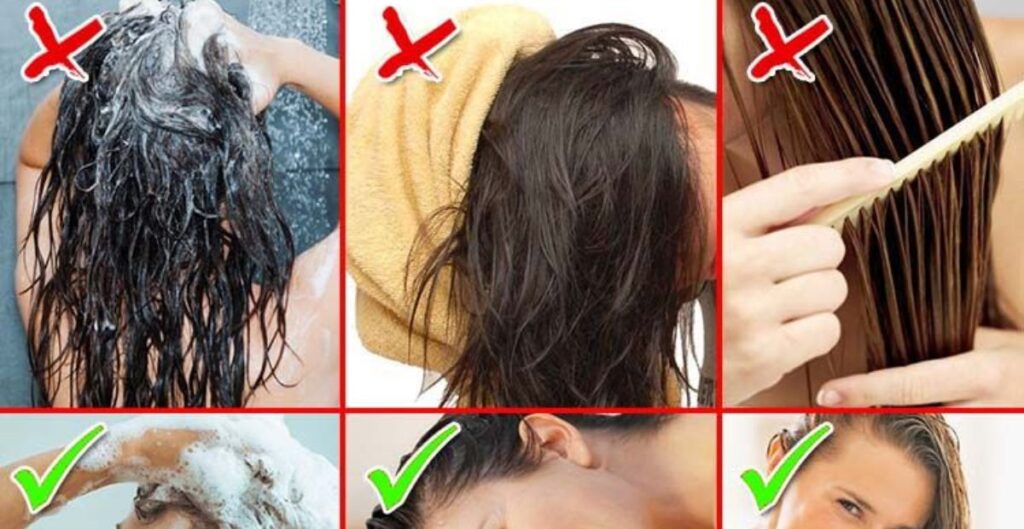
Mastering hair washing technique is important to keep locks clean while protecting their health. Here are the key steps to follow each time you shower:
How often should you wash it?
As discussed earlier, wash frequency depends on various factors like hair type, lifestyle, climate, and products used. Most people find success cleansing 2-3 times weekly, though it may range from daily to monthly depending on your individual needs.
What to use
Select gentle cleansers suited for your hair qualities. Distribute a small, nickel-sized drop of shampoo evenly between dampened palms and massage through root areas only before rinsing. Conditioner should be added to mid-lengths and ends only.
Home remedies
Between formal washes, freshen hair with an apple cider vinegar or honey-infused water rinse. The natural acids work to remove surface oils while hydrate without lathering. For sweatier scalps, a saltwater solution can also refresh.
Considerations for dyed hair
Those with color-treated locks should opt for hydrating, color-safe formulas without sulfates. Also be cautious of water temperature as heat can cause faster fading. Limit washes to twice weekly max.
What type of water to use
For hair with a mineral-rich water supply, condition well or incorporate an acidic rinse agent to balance alkalinity. Those with hard water may benefit from a filter system too.
Best water temperature
Lukewarm water at around 100°F is gentle enough to cleanse without stripping natural oils or scalp bacteria. Cold can shock while hot pulls open cuticles excessively.
What not to do
Avoid rubbing or scrubbing the scalp roughly, over-toweling hair, and leaning your head back under hot streamflow which can all lead to breakage over time. Be delicate yet thorough.
Proper hair care technique is key to keeping strands healthy while removing buildup. Customize your routine to suit hair qualities.
Can you over-wash your hair?
It’s certainly possible! Frequent cleansing without sufficient moisture replenishment can actually damage hair long-term through a process called hygral fatigue. Here’s an overview:
Signs of over-washing:
- Dry, brittle strands prone to splitting
- Limp, straw-like texture lacking shine
- Increased flyaways and frizziness
- Scalp flakiness or irritation between washes
- Possibly even hair shedding or loss from cuticle trauma
What’s happening:
Daily shampooing strips natural oils that coat and soften hair. Without these emollients replaced via conditioning, cuticles are left unprotected and dryness/breakage risk increases with each ensuing wash.
Prevention tips:
- Gradually stretch washes to 2-3 times weekly max
- Deep condition one weeknight
- Refresh with dry shampoo between
- Limit other heat styling when possible
- Moisturize with a high quality leave-in between routines
Moderation is key when cleansing tresses. Listen to hair cues and scale back routines that may be causing damage from excessive removal of natural oils and moisture over time.
Is there a right way to wash hair?
With so many variables between hair types, the “right” technique depends on individual needs. However, some best practices apply broadly:
Carefully consider what products you use
Opt for formulas suited to your hair texture, color-treated or not, with gentle yet effective ingredients.
Pick the right shampoo for your hair type
Moisturizing, volumizing, clarifying – choose a product specifically formulated for your hair’s concerns like oil balance, damage level etc.
Try a co-wash
Conditioner-only cleansing works well for many hair textures needing moisture without sulfates like curls, waves, and thicker styles.
Know that natural washes are fine
Baking soda, apple cider vinegar, yoghurt – simple ingredients pamper hair sustainably when needed between regular routines.
Find moisturising conditioners and other optional products
Leave-ins, deep conditioners etc. help replenish what water strips away, protecting hair health long-term.
Don’t wash your hair every day
Allowing natural oils to moisturize between routines prevents damage from over-cleansing. Stretch to 2-3 times weekly.
Know your water type
Adjust techniques based on mineral content – add a rinse aid if needed or switch to purified water sources.
Mastery comes with practice catering to your unique tresses. Focus on gentle yet thorough cleansing alongside deep conditioning for soft, healthy-looking hair.
So, what are the correct hair washing steps to follow?
Proper technique maintains hair’s condition:
1. Wet your hair thoroughly
Saturating prepares hair and opens cuticles for optimal product application and rinsing.
2. Apply your shampoo
Emulsify a small amount between hands and massage gently into scalp focusing on roots.
3. Go easy on your scalp
Avoid excess rubbing which can irritate and damage follicles over time.
4. Rinse thoroughly
Remove all suds completely with water, rinsing twice for best results.
5. Condition from mid-lengths to ends
Avoid roots for a lightweight yet moisturized look.
6. Rinse conditioner fully
Leave no residue to prevent heaviness or product buildup.
7. Apply styling products
Gels, creams etc. if desired once completely rinsed.
Proper technique keeps hair fresh and healthiest between washes. Listen to your locks and adjust as needed.
How to Wash Your Hair Properly
Now that we’ve explored how often to cleanse hair, let’s review the proper technique for hair washing. Following some best practices will help remove buildup effectively without stripping away natural oils or causing damage.
How often should you wash it?
As discussed earlier, cleansing frequency depends on hair texture and needs. Most people find washing 2-3 times weekly works well, but this may range from daily to every 10-14 days depending on factors like oiliness, activity level, protective styles, and products used.
Which factors affect how often you should wash your hair?
Several variables influence optimal wash scheduling:
1. Oiliness
Those with oilier scalps may find daily cleansing necessary to prevent greasy buildup. Fine or straight hair also shows oils sooner.
2. Physical conditions
Disorders like psoriasis or excessive sweating from hot climates/exercise may warrant added washing.
3. Products and styling habits
Heavier creams or frequent hot tool usage require resetting with cleansing more regularly to avoid residue buildup.
So check in regularly with hair and scalp to adjust as needs change with seasons, routines, or other lifestyle shifts. Prevention and attention will keep hair its healthiest.
How to Wash Your Hair Properly
Here are the key steps for cleansing locks without damage:
1. Wet hair thoroughly
Start with wetting all strands and scalp with warm water to activate cuticles for optimal product penetration.
2. Apply shampoo
Massage a dime-sized dollop into roots and scalp using fingertips in circular motions. Gently work through lengths without heavy rubbing or excess foam.
3. Rinse shampoo out completely
Be sure to double rinse to fully remove any leftover product that could otherwise weigh hair down over time with residue accumulation.
4. Condition mid-lengths to ends
Squeeze a quarter-sized blob of conditioner from ears to tips, avoiding roots which need less heavy moisturizing to prevent oil clumping.
5. Detangle hair with a wide-tooth comb
Work through knots section by section under running water once conditioned for preventing breakage.
6. Rinse conditioner thoroughly
Be sure no heavy product films remain by rinsing thoroughly 2-3 times until water runs clearly.
Proper technique and avoiding aggressive actions like heavy toweling keeps strands healthy whether cleansing daily or stretching it out longer in between washes. Consistency protects hair long-term.
What to use
When shopping for cleansers, consider your hair type:
- Dry/damaged hair – Creamy moisturizing formulas
- Color-treated hair – Sulfate-free to minimize fading
- Fine hair – Lightweight cleansers for volume
- Oily hair – Clarifying shampoos with salicylic acid
- Curly hair – Co-washers or low-poo products
- Sensitivity – Sulfate-free, paraben-free options
Match ingredients to strands’ needs for ideal results and avoidance of scritching or irritation.
Home remedies
For less frequent washes between cleansings, apple cider vinegar rinses restore softness and shine without stripping natural oils. Baking soda easily absorbs excess oils in a pinch too when added to water.
Considerations for dyed hair
Porous color-treated hair especially benefits from gentler cleansing with techniques like co-washing with conditioner alone or using cleansing creams. Limit shampoo usage to twice weekly max.
What type of water to use
Soft, filtered, or distilled water works best for hair to avoid mineral buildup associated with hard water which requires deeper conditioning to offset.
Best water temperature
Lukewarm around 100°F is ideal for hair as it’s not too cold to shock strands or too hot to damage. Test it first before submerging strands.
What not to do
Other no-no’s include excessive root rubbing, toweling hair roughly while wet and damp, frequent high-heat styling, and failing to use a wide-toothed detangling comb. Patience prevents pain!
Proper hair washing unlocks healthy, happy strands whether routines call for daily or less frequent cleansing. Let me know if any part of the process needs more explanation!
Is there a right way to wash hair?
While hair washing techniques vary slightly based on texture, needs, and products used, there are some universal best practices that set the foundation for any effective cleansing routine:
Carefully consider what products you use
Choose formulas tailored for your specific hair type, whether that means lightweight moisture for fine hair or clarifying shampoos for oily scalps. The right ingredients prevent damage.
Pick the right shampoo for your hair type
Gentle, moisturizing formulas work well for color-treated or dry strands, while refreshing anti-dandruff varieties suit flaky scalps. Match cleansers to hair profile.
Try a co-wash
For curly, wavy, or tight textures that benefit from less stripping, a moisturizing silicone-free conditioner frequently used in place of shampoo adds hydration.
Know that natural washes are fine
Baking soda, egg yolks, or diluted apple cider vinegar spritzes provide refreshing cleansing for some without harsh chemicals stripping hair’s natural oils.
Conclusion
There is no one-size-fits-all approach to hair washing – the best routine is the one tailored specifically to your individual hair qualities, lifestyle needs, and personal preferences. By paying attention to factors like texture, moisture levels, scalp health, climate conditions, products used, and daily activities, you can determine the ideal cleansing frequency and technique customised for your tresses.
Always listen to your hair and scalp, watching for signs that may indicate the need to tweak your methodology. With ongoing care, monitoring and adjustments over time, you’ll perfect a maintenance strategy keeping strands balanced, nourished and thriving at their healthiest.
